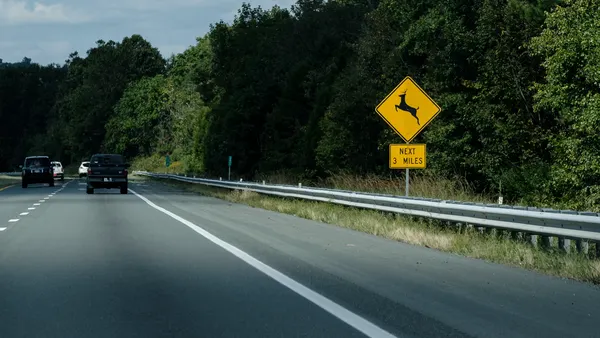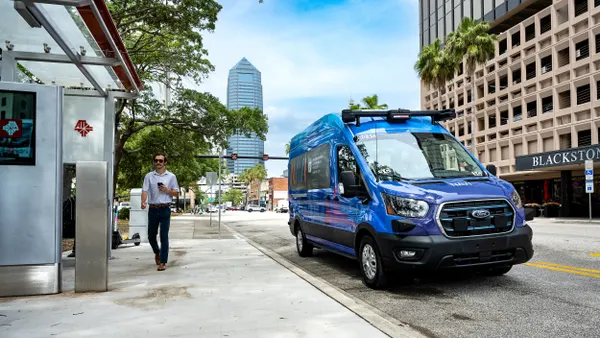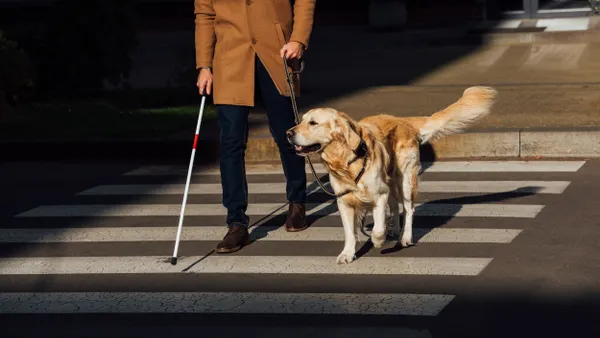Dive Brief:
- The National Transportation Safety Board (NTSB) has released a report on its investigation into last year's deadly Uber autonomous vehicle (AV) accident in Tempe, AZ. NTSB found the vehicle did not stop because it wasn't programed to react to jaywalkers.
- The report determined the AV detected the victim 5.6 seconds before impact, but the system didn't classify her as a pedestrian or predict that she would cross the street because she was jaywalking and not in a crosswalk. The system changed its classification of the pedestrian multiple times, alternating between labels of vehicle, pedestrian and "other," which ultimately rendered it unable to predict her path. The system only recognized an emergency situation — imminent collision — 1.2 seconds before impact when the pedestrian was directly in front of the car. The automatic braking system had a one-second delay in emergency situations and provided an auditory alert for the back-up driver to take over.
- The report says from September 2016 to March 2018, Uber's vehicles were involved in 37 crashes while in autonomous mode, but were only the striking vehicle in two of the crashes. One involved an AV hitting a bent bicycle lane bollard, and the other involved a back-up driver taking control to avoid a quickly approaching vehicle that entered the AV's travel lane. That driver ended up hitting a parked car.
Dive Insight:
Speculation and blame about this incident has circulated since it occurred in March 2018. Tidbits of information released before the final NTSB report painted a partial picture that led some people to draw their own conclusions.
At the time of the crash, some immediately blamed Uber and its vehicle, but a preliminary investigation showed the victim likely had been jaywalking and police recommended waiting until more details were available before passing judgment. When video of the collision was released about three months later, it showed the safety driver looking down at streaming entertainment for six minutes of the 22-minute trip. But earlier this year, Arizona prosecutors said Uber is not criminally liable and decided not to press charges because the video "likely does not accurately depict the events that occurred." They also recommended waiting for more evidence to be collected.
The NTSB report says Uber made a number of changes to its software to improve safety before re-introducing its AVs to the road in December 2018. But Uber didn't have satisfactory safety plans in place prior to the March 2018 fatal crash.
Part of what makes this situation challenging is the lack of federal AV legislation, although another push for such measures occurred this summer. AV companies are not mandated to report data or findings to the federal government. They do have to follow each state's AV regulations, but those vary and early regulations did not necessarily require the submittal of detailed safety plans.
This report illustrates that, while progress is occurring on AV development, there is still a long way to go before they will be safe for widespread public use. At the very least, additional software upgrades and learning more about moving and stationary objects in AVs' surroundings is necessary, based on findings in the NTSB report.
The report explains that the automated driving system was only designed to be used "on pre-mapped designated routes." Pre-mapping is a time-consuming process that might not prove feasible if AVs are to go mainstream. However, MIT researchers may have made progress on that front, as they released technology this week that allows delivery robots to navigate based on real-time visual cues rather than requiring pre-mapping.
The NTSB will hold a board meeting later this month — open to the public — to determine the probable cause of the crash.










